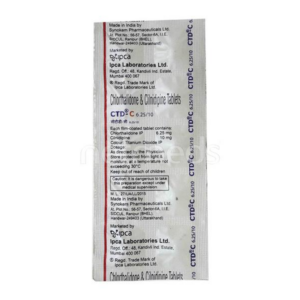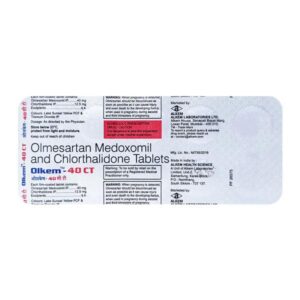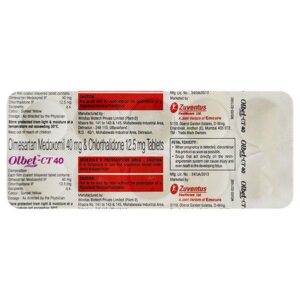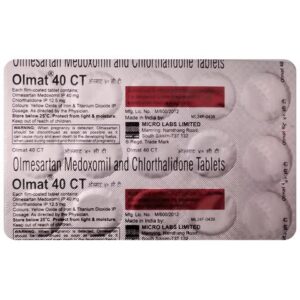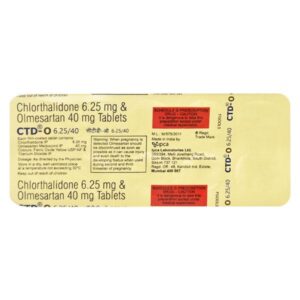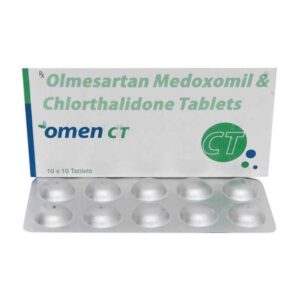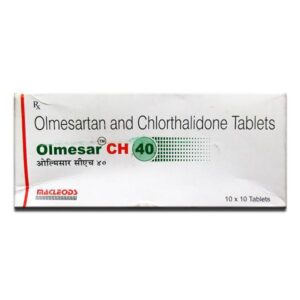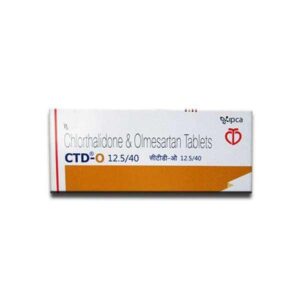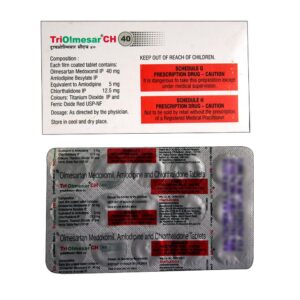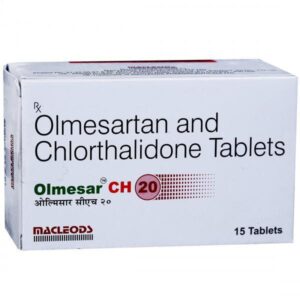CHLORTHALIDONE + OLMESARTAN
Chlorthalidone: Chlorthalidone is a medication used to treat high blood pressure and fluid retention (edema) caused by conditions such as heart failure or kidney disease. It is a diuretic, which means it helps the body eliminate excess fluid and salt by increasing urine production.
Mechanism of action:
Chlorthalidone works by inhibiting the reabsorption of sodium and chloride in the distal renal tubules of the kidneys. This increases the excretion of water and electrolytes, resulting in reduced fluid volume and blood pressure.
Dose:
The typical starting dose for adults with hypertension is 25 mg once daily, which may be increased to 50 mg depending on the individual’s blood pressure response. For edema, the initial dose is usually 50 mg once daily. The dosing may vary, and it is important to follow the instructions provided by the healthcare professional.
Side effects:
Just like any medication, Chlorthalidone can cause side effects. Common side effects include dizziness, fatigue, headache, increased urination, muscle cramps, weakness, and low blood pressure. Less frequently, individuals may experience gastrointestinal disturbances, dry mouth, rash, photosensitivity, or electrolyte imbalances (such as low potassium or sodium levels). It’s important to notify a healthcare professional if any side effects become severe or persistent.
Chlorthalidone may interact with other medications, including nonsteroidal anti-inflammatory drugs (NSAIDs), lithium, corticosteroids, digoxin, or certain diabetes medications. Therefore, it’s crucial to inform the prescribing doctor of all medications, including over-the-counter drugs and herbal supplements, being taken before starting Chlorthalidone.
As with any medication, it’s essential to take Chlorthalidone as prescribed and follow up regularly with a healthcare professional to monitor its effectiveness and manage any potential side effects.
Olmesartan: Olmesartan is a medication used to treat high blood pressure, which is also known as hypertension. It belongs to a class of drugs called angiotensin II receptor blockers (ARBs).
The primary mechanism of action of Olmesartan is to block the binding of angiotensin II to the angiotensin receptor, which leads to the relaxation and widening of blood vessels. By doing so, it helps to lower blood pressure and improve blood flow.
The usual starting dose of Olmesartan is 20 mg taken once daily. However, the dose may vary depending on the individual’s condition and response to treatment. The maximum recommended dose is 40 mg once daily.
As with any medication, Olmesartan can cause side effects. Common side effects may include dizziness, fatigue, diarrhea, stomach pain, and headache. Rare but more serious side effects can include kidney problems, high potassium levels, and allergic reactions. It is important to discuss any concerning side effects with a healthcare professional.
Olmesartan is generally well-tolerated and is often prescribed as a long-term treatment to manage high blood pressure. It is important to take the medication as prescribed and regularly monitor blood pressure to ensure it is effectively controlled.

